The ENGAKU-JI is one of my favorite temples in Kamakura. It is ranked in the 2nd among the Five Great Zen Temples in Kamakura and, in fact, it boasts several magnificent Buddhist structures such as SAN-MON, BUTSU-DO, HOJO, SHARI-DEN, and OH-GANE. Their appearances are very impressive but their history and/or story behind have made me a real fan of the temple.
The founder of the Engaku-ji Temple was MUGAKU SOGEN, a Chinese Zen master who left his mother country and came to Japan in the 13th century. Actually it was in the midst of Mongolian armed-attacks to the northern part of Kyushu Island, Japan. There were two major battles and more than 100 thousands of soldiers from the both countries lost their lives. For his sincere hope of national protection and peaceful repose of the souls of all soldiers from Japan and Mongolia, MUGAKU SOGEN founded Engaku-ji. I respect his wish of mourning for all war victims no matter from which country they came because they were to fight against each other for the destiny of their own nation.
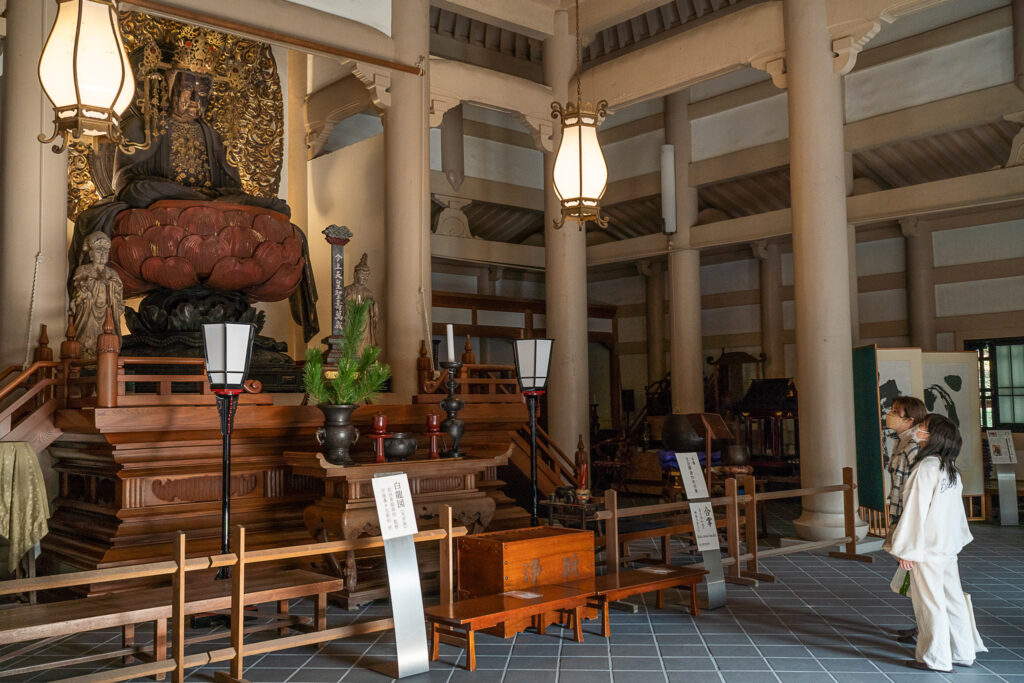
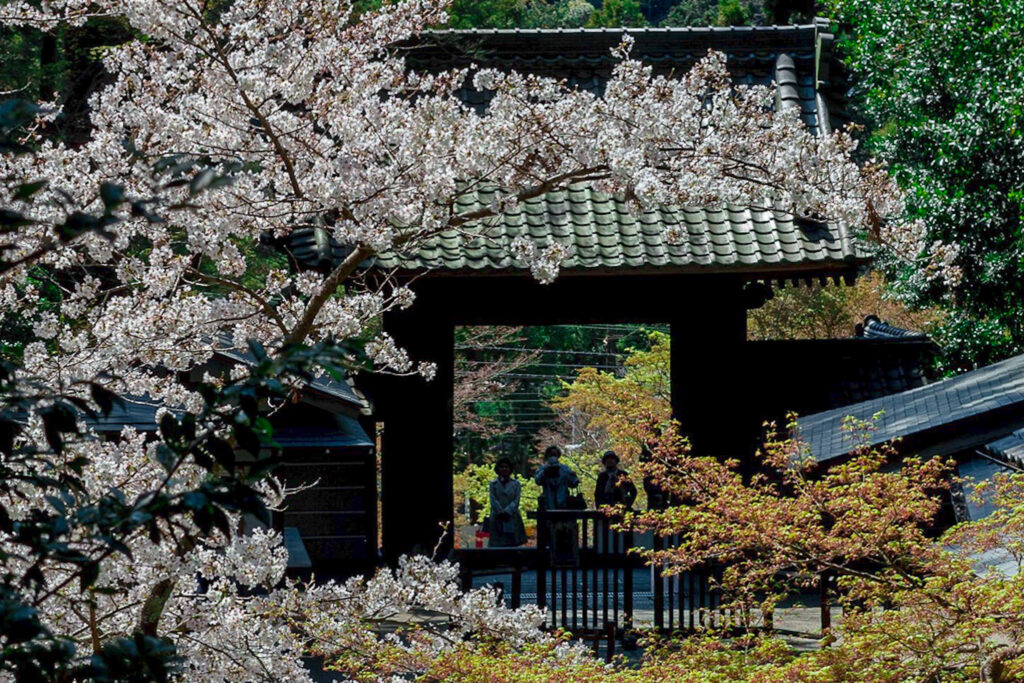
San-Mon
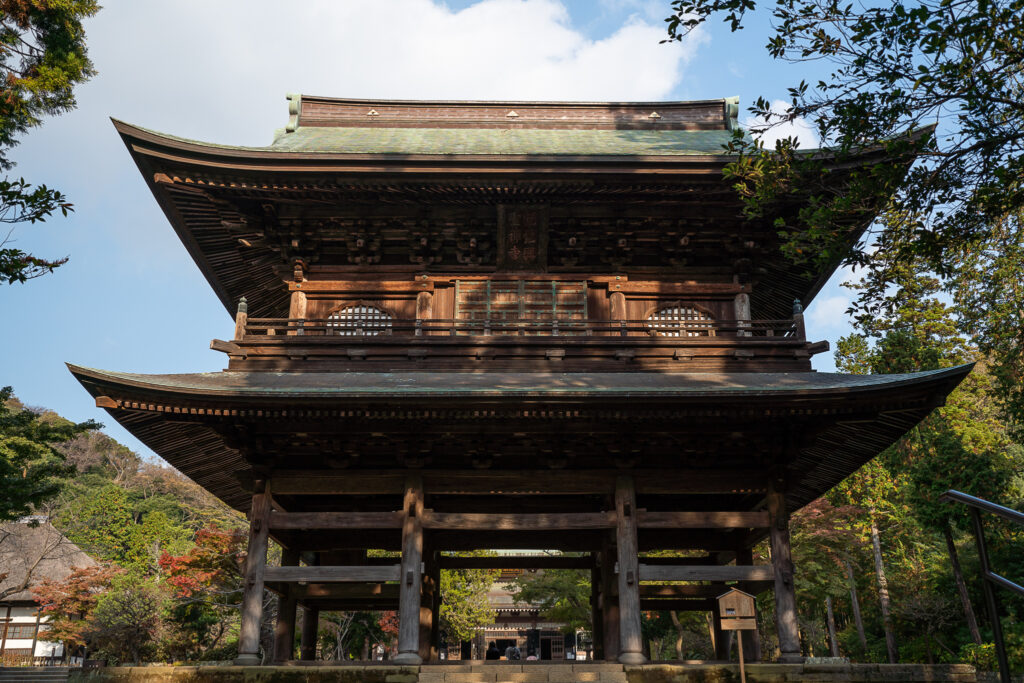
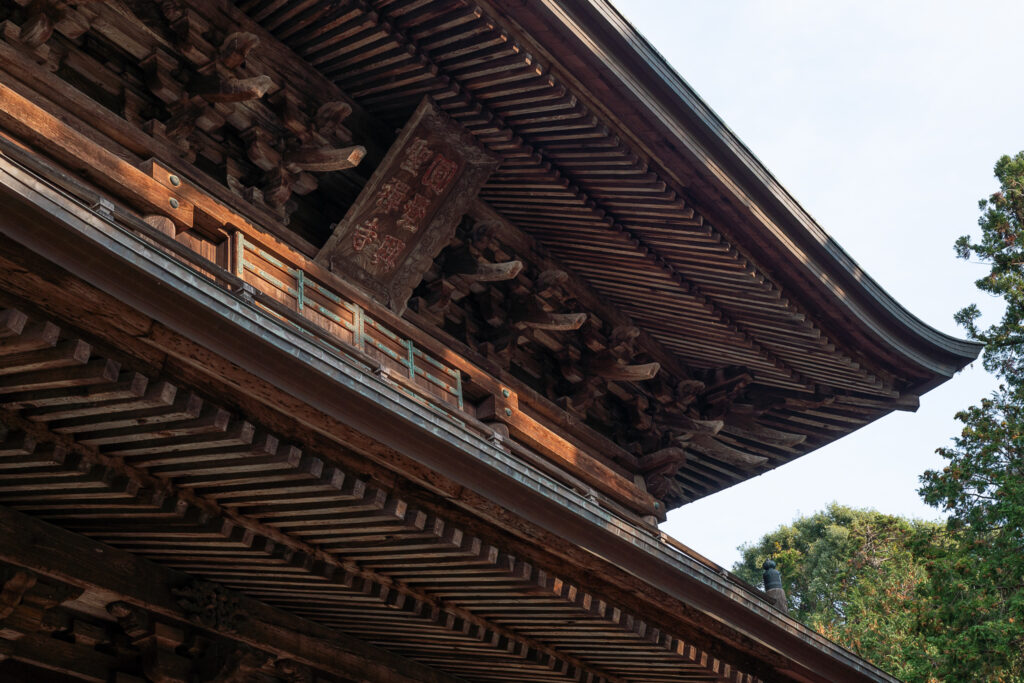
“San-mon” is the main gate preceding the Buddha hall where Engaku-ji’s primary Buddha statue is placed. “Mon” refers to a gate, while “San” has two meanings of a mountain and the number of three. Temples have “San-go” or “mountain name” which is a prefix to the name of the temple, usually referring to the name of the mountain where the temple is located.
The other meaning of “San-mon” is “Three Gates of Liberation”. “San” refers to three but San-mon gate is physically single. According to the Buddhist teaching, it represents three gates to three mental states: emptiness, formlessness (no substances), and desirelessness (no wants) . When you reach the three mental states and get liberated from such earthly bondages as greed, hatred, and foolishness, you are to reach the Buddhist paradise. Even while you are still an ordinary person in the secular world, you will be allowed to approach to the Buddha Hall by going through the San-mon gate as if you got detached from earthly bondage.
Sacred Place of Hyaku Kannon

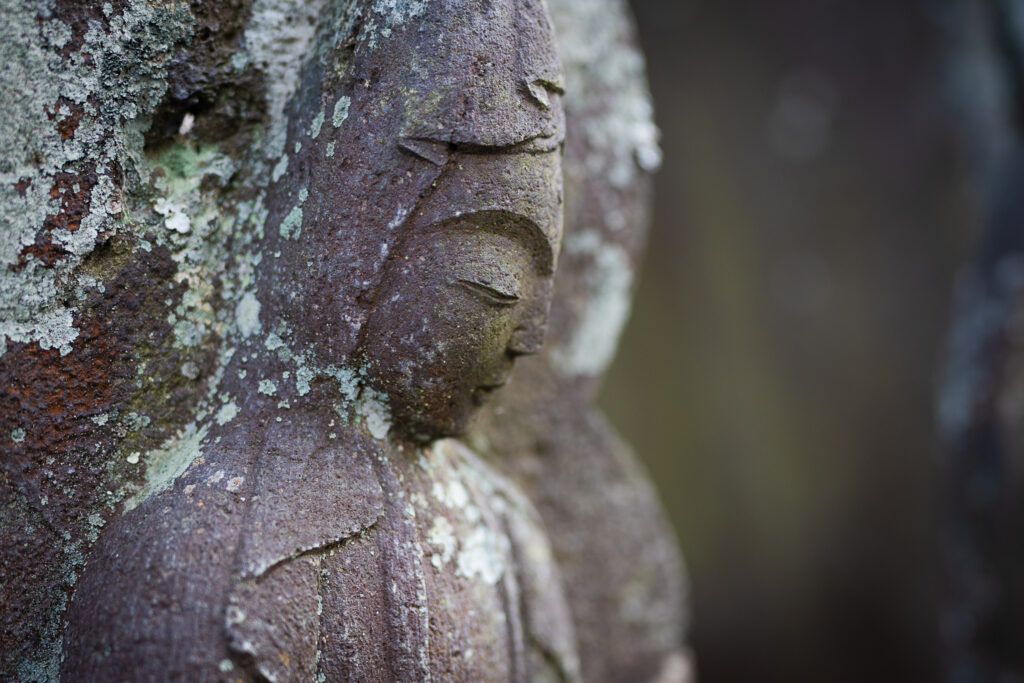
HYAK-KANNON is a word which consists of two meanings of “Hyaku” (a hundred) and “Kannon” (Kannon Bodhisattva or Buddhist’s goddess of mercy). “Hyak-kannnon” refers to a Buddhist pilgrimage or a journey visiting 100 temples which consist of 33 in SAIGOKU (the west), 33 in BANDO (the east) and 34 in Chichibu (the north to Tokyo), each of which enshrines a statue of Kannon Bodhisattva.
The sacred place of HYAK-KANNON has been created in the Engaku-ji by placing many stone KANNON statues in the front garden of HOJO (living quarters of the head Buddhist priest). People can walk through the array of stone KANNON and receive the same benefit of achieving visits to the 100 Kannon temples. I like the place very much for the faces and postures of the stone statues are all different, some look like sleeping, others look like pondering as if they represent all different people in the world. The scenes make me very relaxed.
By Jin Shibata

Comment